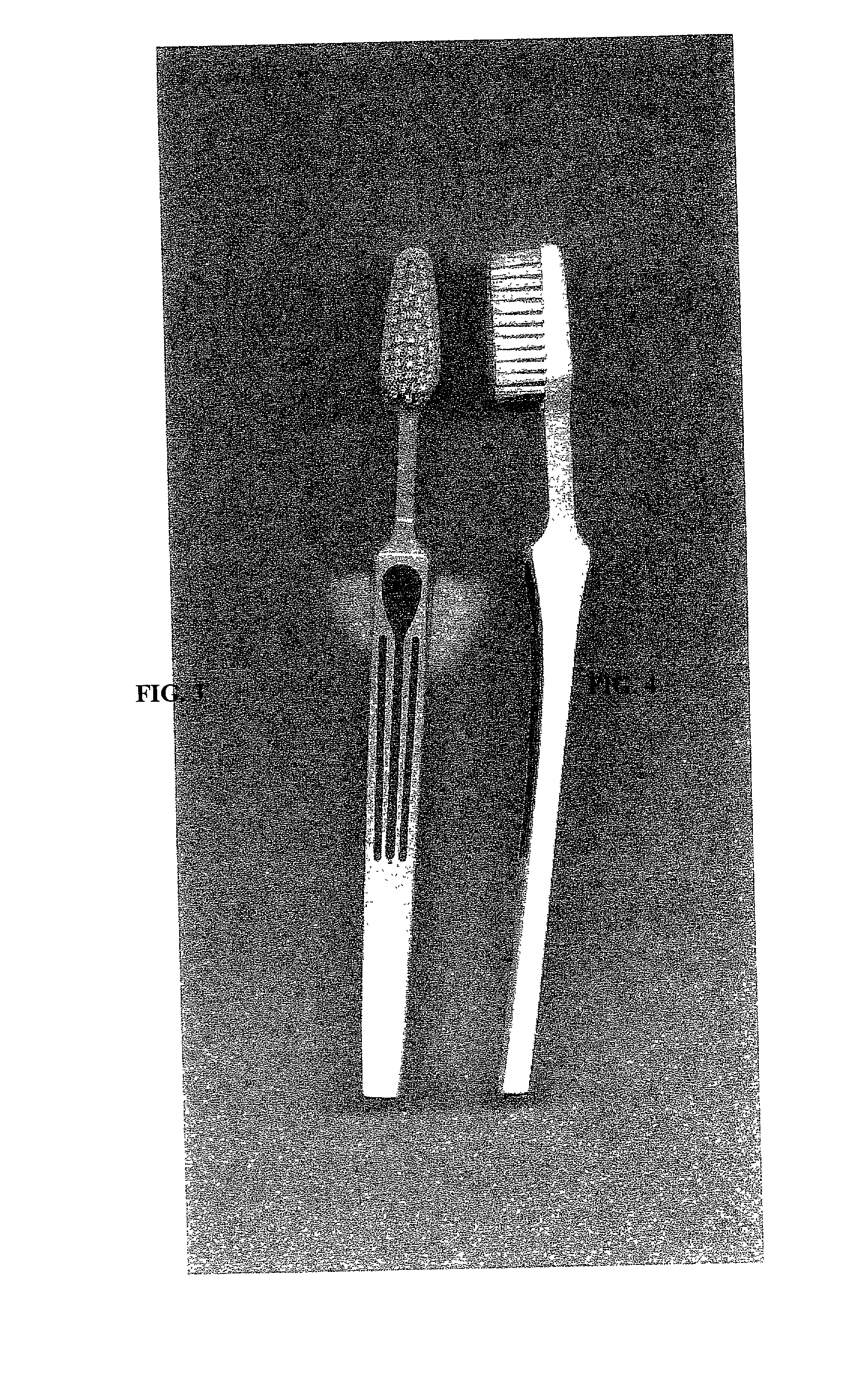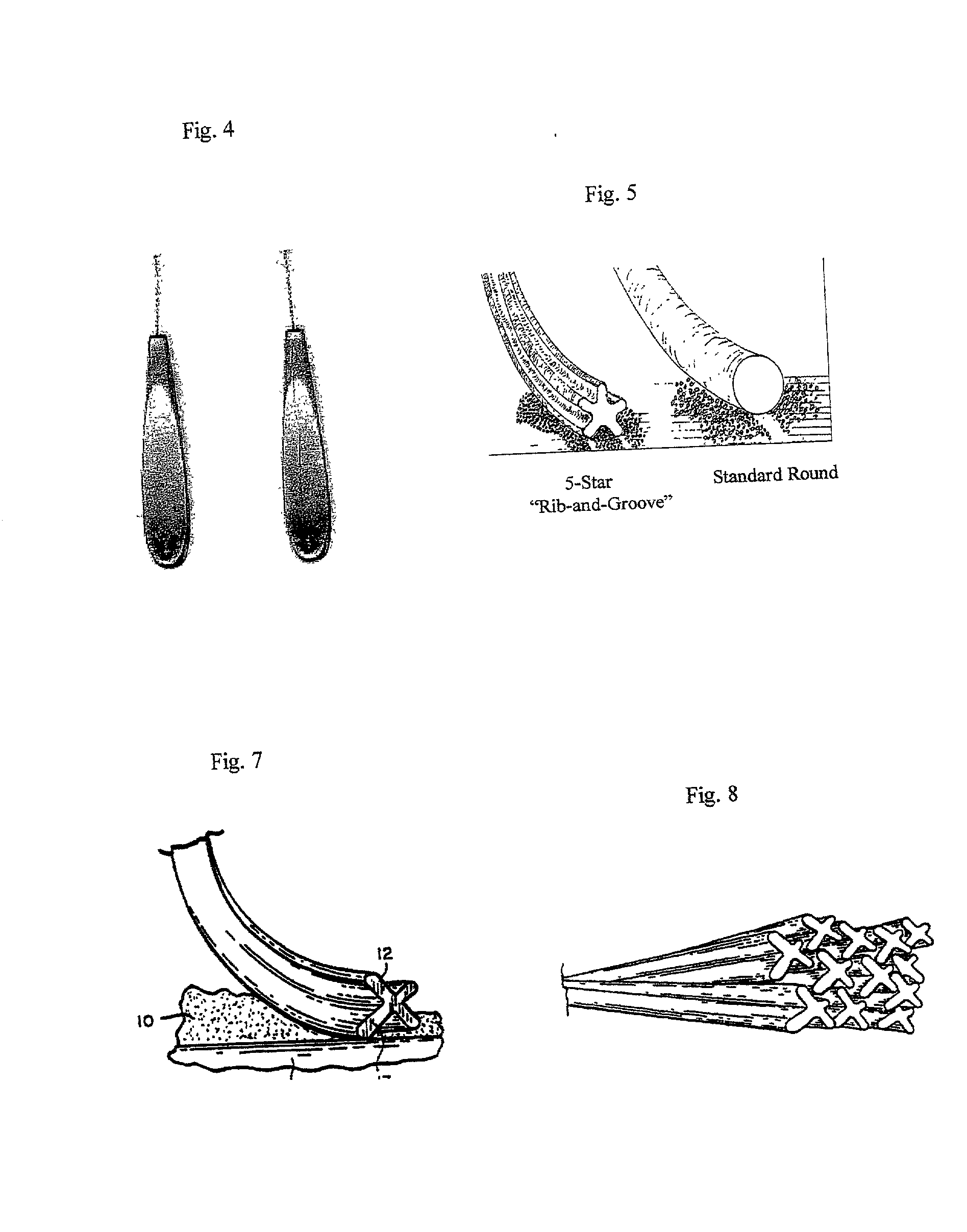Biofilm therapy process and elements
a biofilm and treatment process technology, applied in the field of periodontal patients, can solve the problems of ineffective oral hygiene response to the overall enlightened understanding of oral hygiene, ineffective teeth cleaning, and inability to address the fundamental oral care problem of patients suffering from gum disease, and achieve the effect of improving gingival detachmen
- Summary
- Abstract
- Description
- Claims
- Application Information
AI Technical Summary
Benefits of technology
Problems solved by technology
Method used
Image
Examples
example 27
[0053] A soft abrasive containing proxy gel suitable for use with a ribbed and grooved bristle proxy brush was prepared having the following formula:
6 Ingredient % weight / weight Water (deionized) 6.20 Ultramulsion .RTM.-35 / 2.5 mmcs (20% sol) 7.50 Flavor 0.40 Sorbitol 70% 45.14 Disodium EDTA 0.05 Cetyl pyridinium chloride 0.06 Ethanol 18.00 Sident-10 2.0 Sodium saccharin 0.15 Carboxymethylcellulose 0.50 Glycerin 20.00
[0054] The foregoing formulation was prepared as follows:
[0055] Previously prepared ULTRAMULSION.RTM.-35 / 2.5 mmcs@20%) was added to water followed by the flavor with mixing. With stirring the following were added to the mixture sequentially: Sorbitol (70%), EDTA, CPC. Ethanol was then added, followed by saccharin with stirring until dissolved. A premix of glycerin and CMC (lump-free) was added slowly with stirring until homogenous. Mixture de-aerated with vacuum to remove bubbles and transferred into tubes.
example 28
[0056] A soft abrasive toothpaste was prepared having the following formula:
7 I. Ingredient % weight / weight 1. Deionized water 32.14 2. Sorbitol 70% Aq. 19.00 3. TetraPotassium pyrophosphate 3.90 4. Sodium saccharin 0.20 5. Ultramulsion .RTM.-10 2.00 Pre-mix #2 6. PEG-12 1.00 7. Sident-9 14.00 8. Sident-22a 6.00 9. Aluminum oxide 10.00 10. Titanium dioxide 0.40 11. Vanillamint flavor 1.00 12. Sodium monofluorophosphate 0.76 13. Cellulose Gum-7-MF 0.80 Pre-mix #1 14. Glycerine-USP 8.00 Pre-mix #1 16. Sodium Lauryl Sulfate 0.80 100.00
[0057] Pre-Mix Instructions:
[0058] A. Pre-mix #1: Slurry the Cellulose Gum into the Glycerine, insure the mix is lump-free (no fish-eyes).
[0059] B. Pre-mix #2: Prepare a 20% aqueous dispersion: 2% ULTRAMULSION.RTM. and 8% Deionized Water.
[0060] II. Mixing Instructions:
[0061] A. To the DI Water, add ingredients 2 thru 6 in order, with moderate agitation. Insure all ingredients are completely dissolved before proceeding.
[0062] B. When A is complete, add Sid...
PUM
| Property | Measurement | Unit |
|---|---|---|
| size | aaaaa | aaaaa |
| soft | aaaaa | aaaaa |
| shapes | aaaaa | aaaaa |
Abstract
Description
Claims
Application Information
 Login to View More
Login to View More - R&D
- Intellectual Property
- Life Sciences
- Materials
- Tech Scout
- Unparalleled Data Quality
- Higher Quality Content
- 60% Fewer Hallucinations
Browse by: Latest US Patents, China's latest patents, Technical Efficacy Thesaurus, Application Domain, Technology Topic, Popular Technical Reports.
© 2025 PatSnap. All rights reserved.Legal|Privacy policy|Modern Slavery Act Transparency Statement|Sitemap|About US| Contact US: help@patsnap.com



